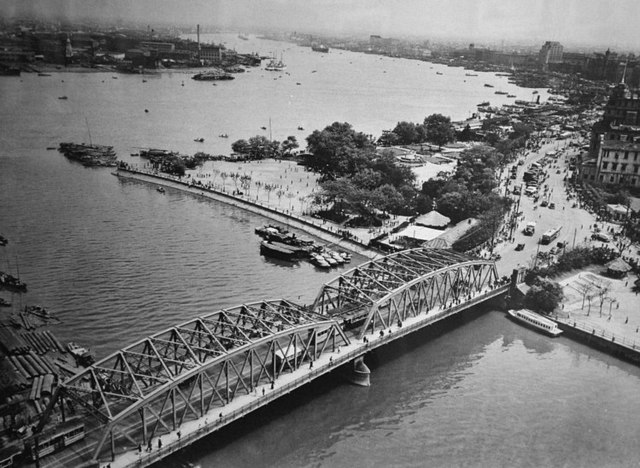The Waibaidu Bridge, called the Garden Bridge in English, is the first all-steel bridge, and the only surviving example of a camelback truss bridge, in China. The present bridge is the fourth Western-designed bridge built at its location since 1856, in the downstream of the estuary of the Suzhou Creek, near its confluence with the Huangpu River, adjacent to the Bund in central Shanghai. It connects the Huangpu and Hongkou districts and was opened on 20 January 1908. With its rich history and unique design the Waibaidu Bridge is one of the symbols of Shanghai. Its modern and industrial image may be regarded as the city's landmark bridge. On 15 February 1994 the Shanghai Municipal Government declared the bridge an example of Heritage Architecture, and one of the outstanding structures in Shanghai. In an ever-changing metropolis, the Waibaidu Bridge still remains a popular attraction, and one of the few constants in the city skyline.
Waibaidu Bridge in 2019
Waibaidu Bridge in the 1930s, photographed by the photographer Lang Jingshan
Wills' Bridge
Wooden Garden Bridge.
Suzhou Creek, also called the Wusong (Woosung) River, is a river that passes through the Shanghai city center. It is named after the neighboring city of Suzhou (Soochow), Jiangsu, the predominant settlement in this area prior to the rise of Shanghai as a metropolis.
Suzhou Creek from Waibaidu Bridge
Suzhou Creek during the Qing dynasty.
View of the General Post Office in the 1920s from Garden Bridge.
View of the General Post office in 1987.








